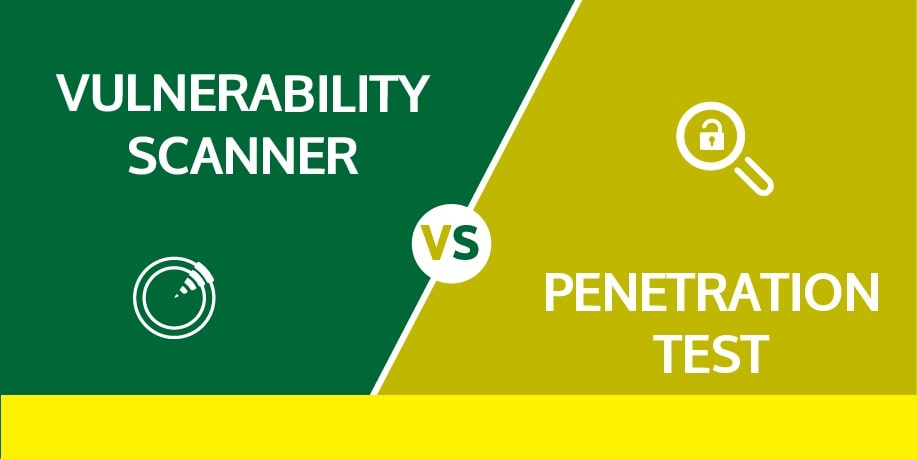
Difference between Vulnerability Scanning and Penetration Testing
18 June 2021Penetration and vulnerability scanning are two key security services to highlight your business in security’s weaker areas so they can be corrected prior to a cybersecurity incident.
As a result, penetrating tests and vulnerability scanning for the same service are often confused and terms are used interchangeably. This can cause problems, as companies can finally invest in one service if they really need the other.
So what is the difference between vulnerability scanning and penetration testing, exactly, and which is right for your company?
Table of Contents
- What is the Vulnerability Scanning?
- The advantages of Vulnerability Scanning
- What is a Penetration Testing?
- The advantages of Penetration Testing
- Ethical Hacking Course After 12
- How to Correct User Behavior in times of Hacking attacks
- How To Scan Network Traffic With Brim For Malicious Activity.
- Forgot Pattern Lock 6 Ways To Bypass Android Lock Screen.
What is the Vulnerability Scanning?
A vulnerability scan is an automated high-level test that looks for potential vulnerabilities and reports them. In order to detect security problems, the scans look at computers, systems, and networks.
Vulnerability scans are considered to be a largely automated service to exploit areas of your business. You can search for more than 50 000 vulnerabilities and many of the leading certifications for cyber safety include PCI DSS, FFIEC and GLBA.
Vulnerability scans can take anywhere between several minutes and several hours manually or run on a schedule. They provide a passive approach to the management of vulnerabilities and report any faults. Those findings are the responsibility of the company owner or the IT personnel.
Also Read: How API Attacks work and how can we prevent them? and How to learn Ethical Hacking from the basics
The advantages of Vulnerability Scanning
Vulnerability tests complete a detailed report that provides a comprehensive list of vulnerabilities in the various systems of the company. This allows you to act on potential weaknesses and strengthen business safety in a more informed position.
If you’re looking for a quick, high-level way to identify your business vulnerabilities, then scanning vulnerabilities is a great option. These scans are often extremely affordable, can be completed quickly and can be performed with relatively little manual input regularly.
The data provided by a vulnerability scan, however, are limited. It does not determine whether or not a weakness is usable and, while advise on how to address certain issues, the remedial work will not be adapted to the organization’s specific needs.
Although vulnerability scanning in flagging issues is very useful, the real risk of a problem cannot always be determined. This would be diagnosed as a medium risk for anonymous (no credential requirement) access to a file server. However, if the file server contains sensitive data such as staff or customer personal data, the data security standards and GDPR would be violated.
This should be classified as a critical risk in the hands of a penetration testator if remedying tasks are needed.
Also Read: Tools for hacking IoT devices and Top 5 Diploma Courses in Cyber Security
What is a Penetration Testing?
What is the difference between a penetration test and the vulnerability scan? Simply put, a penetration test is a detailed and practical exam performed by a real person. It seeks to detect and utilise your business’ weaknesses.
An input test simulates a hacker trying to access your company, because this is one of the most efficient ways to highlight the areas that can be exploited. Analysts or ethical hackers search for vulnerabilities and then try using techniques such as password crack, buffer overflow and SQL injection to show that they can exploit them.
In contrast to vulnerability scans, penetration tests are extremely detailed and help to determine the risks associated with certain weaknesses in your company security. They offer a unique way to identify and remedy vulnerabilities across software and networks.
The advantages of Penetration Testing
While penetration trials tend to take more time and work than vulnerability scans, they produce very detailed reports which describe the attacks, test methods and remediation suggestions.
The use of manual, live tests enables more accurate and detailed information to be gained prior to the recommendation and implementation of corrections. The value of a penetration test lies in the tester’s ability to identify weaknesses and to understand many ways of exploiting a vulnerability.
Also Read: Social Engineering in Penetration Testing and How to prevent Brute Force Attack
Scanning and tandem penetration vulnerability testing
Although vulnerability tests and penetration tests are often viewed as different services, any company committed to maintaining a good risk position should seek to use both together. In combination, vulnerability scanning and penetration testing can help an organisation quickly identify any weaknesses and work towards a solution before the attackers can seize the opportunity.
Pros of vulnerability Scanning
- Fundamental identification of systems, devices or applications of system weaknesses.
- Allows security teams to prioritise patches for critical, severe or high-ranking vulnerabilities.
- Scans are carried out higher than in the first instance from a security point of view and provide faster results of basic weaknesses.
- Substantial resources to set up and maintain the tool are seldom required.
Cons of Vulnerability Scanning
- It is a deeper drive into the defence capabilities of the organisation by simulating real-world cyber-attacks than vulnerability scanning.
- Attempts to identify and exploit all kinds of systemic vulnerabilities.
- Can it be revealed whether an organisation is compromised or help in the investigation into forensics.
- Assists in verifying the overall network environment status and layout.
- Provides insight into the appropriate mechanisms for defence to be used.
Pros of Penetration Testing
- Do not try to exploit the vulnerabilities like a pentest.
- If the scan tool is incorrectly configured, it does not guarantee all systems, devices and applications.
- Does not auto-patch vulnerabilities that have been discovered.
- It may be overwhelming to interpret the vulnerability data.
- It does not involve a person’s judgement or decision-making (e.g. risk and cost-benefit analysis).
Cons of Penetration Testing
- Does not guarantee that all vulnerabilities are detected or exploited successfully.
- Is not guaranteed a fully “safe” organisation if no significant findings or findings have been remedied
- Can take substantial resources, including time and skills.
- Legal matters may arise if the tester is not explicitly permitted to conduct a pentest.
















